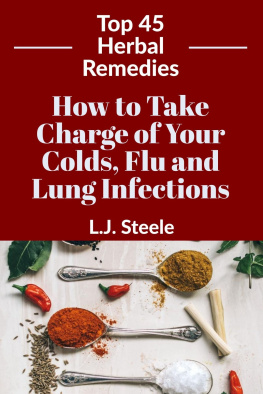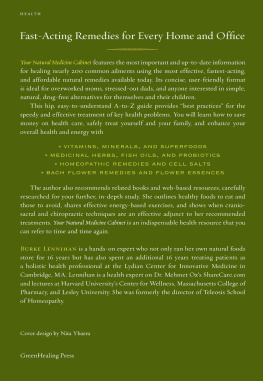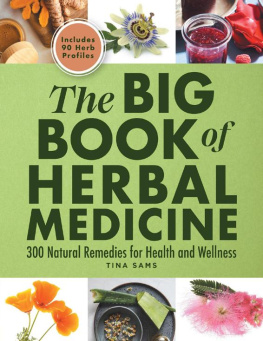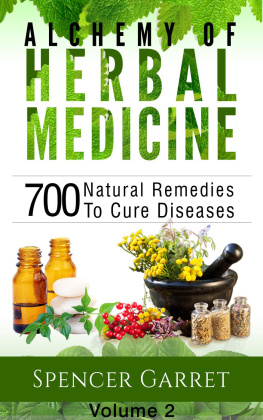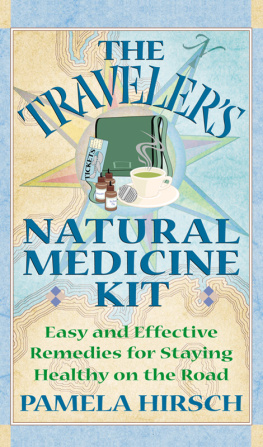
Copyright 2001
by Stephanie Marohn
All rights reserved, including the right to reproduce this work in any form whatsoever, without permission in writing from the publisher, except for brief passages in connection with a review.
Cover design by Steve Amarillo
Cover art by Corbis Images
Illustrations by Anne L. Dunn
Hampton Roads Publishing Company, Inc.
1125 Stoney Ridge Road
Charlottesville, VA 22902
434-296-2772
fax: 434-296-5096
e-mail:
www.hrpub.com
If you are unable to order this book from your local bookseller, you may order directly from the publisher.
Call 1-800-766-8009, toll-free.
Library of Congress Catalog Card Number: 2001091197
ISBN 1-57174-218-2
10 9 8 7 6 5 4 3 2 1
Printed on acid-free paper in Canada
Disclaimer
The information in this book is not intended to replace the medical advice of the reader's own healthcare practitioner or to contradict the medical or surgical decisions regarding any ailment of the reader by his or her physician of choice. Herbs, supplements, and other therapies included in this book produce varying effects depending on the person, which reflects the inherent individualized property of natural medicine. The author and publisher disclaim responsibility for how you choose to employ the information in this book and the results or consequences of any of the treatments covered.
Acknowledgments
My deep gratitude to all the practitioners who contributed protocols to this book. I am so admiring of the fine work you are doing in the world. Thank you all for the time and energy you generously gave to this project, and for your willingness to share your expertise. It was a pleasure meeting you, whether by phone, e-mail, or in person.
Special thanks to Patricia Kaminski, who contributed all the flower essence protocols in the book, based on the vast clinical research she and Richard Katz have conducted through the Flower Essence Society. Thank you, too, Patricia, for your feedback along the way and the whiffs of mountain air in your e-mails.
Special thanks also to Katrina Raphaell, who contributed the majority of the stone / crystal protocols. You are a true gem, Katrina, in the most magical and powerful sense of the word.
My appreciation to Robyn Klein for putting me in touch with a network of truly inspired herbalists.
Great thanks and mea culpa salaams to my friends for their understanding of my unavailability and forgetfulness of important occasions during the white heat of writing this book.
Thank you to Nancy Gallenson, whose fabulous ballet classes provide a body and soul antidote to long hours at the computer.
My gratitude to Hampton Roads for their vision and mission in publishing. I am honored to be part of the family.
And the final thanks go to my brilliant friend and editor Richard Leviton, who never fails to inspire me in multiple realms.
Contents
Introduction
Natural medicine first aid may be the first or the last natural therapy people use, depending on whether they arrive at its use in an inductive or deductive fashion. Some people find their way to alternative medicine through the safe and effective remedies it has to offer for minor, everyday health ailments. Struck by how well it works, these people often begin to investigate the use of alternative therapies for more serious health conditions. Teething is a good example of this process. It has brought more people to homeopathy than any other condition, as a homeopathic physician who contributed to this book states. Because homeopathic remedies work to ease the process of teething, highly pleased parents then take a closer look at the therapy that produced this minor miracle. Homeopathy is just one of the therapies included in this book that wins converts by the efficacy of its simple remedies.
Conversely, other people find their way to alternative medicine through a serious illness, in many cases, unfortunately, using it as the last resort. Even for patients who seek natural therapy only when their conditions are advanced or entrenched, the results are frequently impressive. People who have this experience often come to rely on alternative medicine for most of their health problems. But natural first aid may be the last bastion of care. People are used to popping an antacid when they have heartburn or spraying a synthetic antibacterial spray on a child's cut. While they will avoid the big guns of conventional medicine, they consider the minor remedies harmless, if they consider the matter at all.
There are two problems with this approach. One is that conventional over-the-counter remedies for minor health ailments are, for the most part, chemical based or contain chemical additives. We all ingest, inhale, or are exposed to hundreds of chemicals simply by living our lives in today's worldchemicals in our food, air, and water, in cleaning and other household products, in office equipment, even in furnishings at home and at work. Chemical toxins accumulate in our bodies over our lifetime, and our immune and other systems struggle to cope with the toxic load. In the interests of our health, it behooves us to try to cut down the load wherever we can. There is no need for any of us to be using chemical medicines when natural medicines work so well. First aid is one area where you can avoid the chemicals.
The second problem with relying on conventional medicine for minor ailments is that conventional remedies work by suppressing symptoms and have few if any healing effects. While antibacterial spray might keep your cut from getting infected, it won't do anything to help it heal. Why not use an essential oil or herbal preparation that does both (and contains no chemicals)?
The suppression of symptoms has a more serious impact when it comes to noninjury ailments. Alternative medicine is based on a holistic view of the body, meaning that the body is regarded as a whole, as a unit of interrelated parts and systems, and treatment addresses the whole body rather than focusing on symptoms. According to alternative medicine (and clinical evidence supports this view), suppression of symptoms (as with the use of antibiotics, for example) drives the illness deeper into the body, where it may produce a more serious condition. So instead of suppressing symptoms, natural medicine relieves discomfort while aiding the body in correcting the underlying imbalance that produced the symptoms in the first place. As an example, one remedy for hemorrhoids is the herb red root, which has long been used to clear lymphatic congestion. The connection? A stagnant lymph system is often a factor in the development of hemorrhoids.
If you are in the category of those who use alternative medicine for the big stuff, but reach for the ibuprofen when you have a muscle ache, you might want to reconsider, based on the above points. If you are someone who has never used natural medicine, first aid is a great introduction. After all, the stakes are lowwhat do you really have to lose?
The term first aid as I am employing it goes far beyond first aid as most people think of itemergency medicine for accidents or injuries. Obviously, when you look at the table of contents for this book, you see that most of the ailments listed don't fall into the category of accident or injury. The conditions I include are common ailments that can benefit from self-care as the first line of treatment. The remedies offered here can be the first aid you turn to, if you will. Perhaps that was the original meaning of the term. This is not to say the remedies should be regarded as a replacement for medical care. Some of the conditions in this book require consultation with a qualified health practitioner.
Next page



